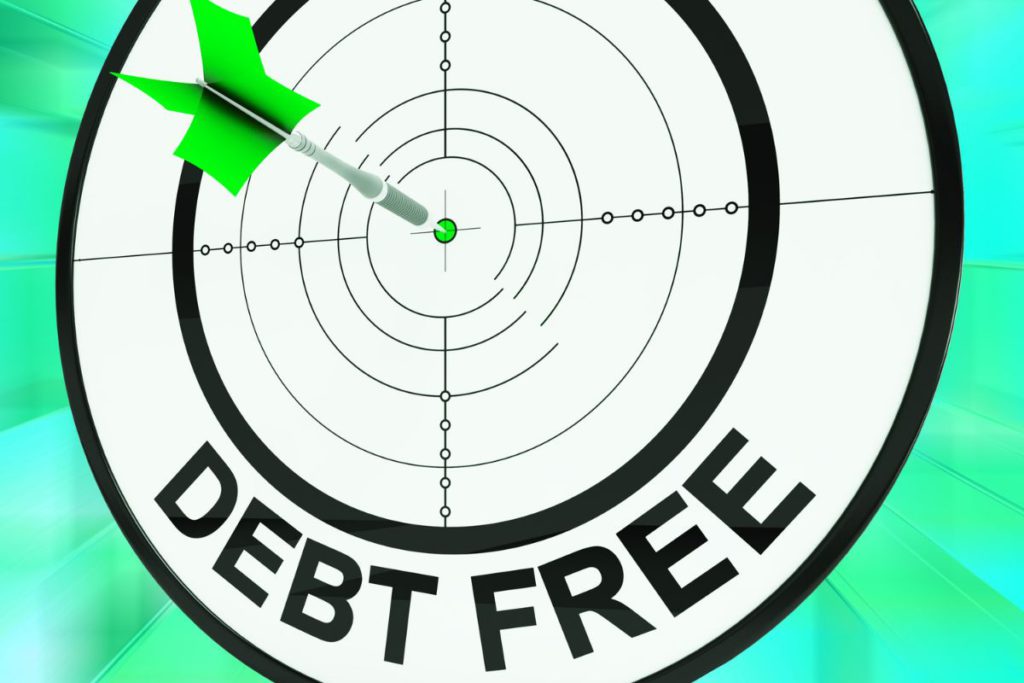Are you tired of feeling like you’re drowning in debt? Do you want to break free from the constant worry about bills and payments? You’re not alone! Many people struggle with debt, but here’s the good news: there are proven methods to help you climb out of the debt hole. Today, we will look at two popular debt-busting strategies: the Debt Snowball and the Debt Avalanche.
Think of these methods as your financial superheroes, each with special powers to fight debt. But which one is right for you? Let’s dive in and find out!
What’s All This Talk About Snowballs and Avalanches?
Before we get into the nitty-gritty, let’s break down what these terms mean. Don’t worry – we’re not talking about actual snow here!
The Debt Snowball Method
Imagine rolling a small snowball down a hill. As it rolls, it picks up more snow and gets bigger and bigger. That’s the idea behind the Debt Snowball method.
Here’s how it works:
- You list all your debts from smallest to largest.
- You pay the minimum on all debts except the smallest one.
- You throw every extra penny you can at that smallest debt.
- Once that smallest debt is paid off, you move to the next smallest.
- Repeat until all debts are gone!
The Debt Avalanche Method
Now, picture an avalanche rushing down a mountain, wiping everything in its path. That’s the power of the Debt Avalanche method.
Here’s the Avalanche in action:
- You list all your debts from highest interest rate to lowest.
- You pay the minimum on all debts except the one with the highest interest rate.
- You put all your extra money towards that highest-interest debt.
- Once that’s paid off, you move to the next highest-interest debt.
- Keep going until you’re debt-free!
The Battle of the Debt-Busting Methods

Now that you know the basics, let’s pit these methods against each other. It’s time for Snowball vs. Avalanche: the ultimate showdown!
Round 1: The Math
The Debt Avalanche comes out on top if we’re talking pure numbers. By tackling high-interest debts first, you’ll pay less interest over time. This means you could be debt-free faster and save more money in the long run.
Let’s look at an example:
Imagine you have these debts:
- Credit Card A: $1,000 balance at 20% interest
- Credit Card B: $5,000 balance at 15% interest
- Personal Loan: $2,000 balance at 10% interest
With the Avalanche method, you’d tackle Credit Card A first, then B, then the personal loan. This approach saves you the most in interest payments.
Avalanche Score: 1, Snowball Score: 0
Round 2: The Psychology
Here’s where the Snowball method shines. Paying off a small debt quickly gives you a “quick win.” This feeling of success can be super motivating! It’s like leveling up in a video game – each small debt you knock out feels like an achievement.
The Snowball method taps into the power of small victories. These little wins can keep you pumped up and determined to keep going. When it comes to motivation, the Snowball method is hard to beat.
Avalanche Score: 1, Snowball Score: 1
Round 3: Simplicity
Both methods are straightforward, but the Snowball method might have a slight edge here. Organizing debts from smallest to largest is easy peasy. You don’t have to worry about calculating interest rates or doing complex math.
The Avalanche method isn’t rocket science, but it does require understanding interest rates and a bit more organizing at the start.
Avalanche Score: 1, Snowball Score: 2
Round 4: Flexibility
Life happens, and sometimes you need to adjust your plan. Both methods can be flexible, but Snowball might adapt more easily to life’s curveballs.
If an unexpected expense pops up, the Snowball method makes it easier to shift focus to a different small debt. The Avalanche method is a bit more rigid since you’re always focused on the highest-interest debt, which might be a large balance.
Avalanche Score: 1, Snowball Score: 3
Round 5: Long-Term Savings
Here’s where the Avalanche method makes a comeback. By tackling high-interest debts first, you’ll save more money over time. This can be especially important if you have debts with high interest rates, like some credit cards.
The difference in savings between the two methods can be hundreds or even thousands of dollars, depending on your debt amounts and interest rates.
Final Score: Avalanche 2, Snowball 3
But Wait, There’s More! The Hidden Powers of Both Methods
While we’ve compared these methods head-to-head, the truth is that both have some fantastic benefits that go beyond just paying off debt.
The Snowball Method’s Secret Strength: Building Good Habits
The Snowball method isn’t just about paying off debt – it’s about changing your relationship with money. As you knock out those small debts, you’re building powerful financial habits:
- Consistency: You learn to make regular payments towards your debt.
- Prioritization: You practice putting extra money towards debt instead of unnecessary spending.
- Goal-setting: You get better at setting and achieving financial goals.
- Positive reinforcement: You experience the joy of progress, which can spill over into other areas of your life.
These habits can remain even after you’ve paid off your debts, setting you up for long-term financial success.
The Avalanche Method’s Hidden Superpower: Financial Literacy
While the Avalanche method might seem more complex initially, it has a secret benefit: it helps you become more financially savvy. Here’s how:
- Understanding interest: You learn how interest rates impact your debt and money.
- Strategic thinking: You practice making financial decisions based on data, not just emotions.
- Long-term planning: You better understand the big picture of your finances.
- Math skills: You improve your ability to calculate and compare financial scenarios.
These skills can help you make smarter money decisions in all areas of your life, from investing to buying a home.
Choosing Your Debt-Fighting Superhero

So, which method should you choose? Here’s a simple guide to help you decide:
Choose the Snowball Method if:
- You need quick wins to stay motivated
- You have several small debts you can pay off quickly
- You struggle to stick to financial plans
- You’re new to budgeting and paying off debt
Choose the Avalanche Method if:
- You’re motivated by saving the most money possible
- You have high-interest debts like credit cards
- You’re comfortable with numbers and calculations
- You can stay motivated for the long haul without quick wins
Remember, the best method is the one you’ll stick with!
The Secret Third Option: The Hybrid Approach
Can’t decide between Snowball and Avalanche? Here’s a little-known secret: you can combine them! Some financial experts recommend a hybrid approach:
- Start with the Snowball method to get some quick wins and build momentum.
- Once you’ve paid off a few small debts, switch to the Avalanche method to save more money in the long run.
This approach gives you the best of both worlds – the motivational boost of the Snowball and the long-term savings of the Avalanche.
Your Debt-Free Journey: Beyond Snowballs and Avalanches

Whichever method you choose, remember that paying off debt is just one part of your financial journey. Here are some extra tips to supercharge your debt payoff:
- Create a budget: Know where your money is going so you can find extra cash to put towards debt.
- Cut unnecessary expenses: Look for areas where you can trim spending and redirect that money to debt.
- Increase your income: Consider a side hustle or asking for a raise to speed up your debt payoff.
- Avoid new debt: While paying off existing debt, try not to take on new debt.
- Celebrate milestones: Reward yourself (in budget-friendly ways) when you hit debt payoff milestones.
FAQs: Your Burning Questions Answered
Q: How long will it take to pay off my debt? It depends on your debt amount, interest rates, and how much extra you can pay. Many online calculators can help you estimate your debt-free date.
Q: Can I negotiate my debt or interest rates? Absolutely! It never hurts to call your creditors and ask for a lower interest rate, especially if you’ve been making on-time payments.
Q: What if I can’t even make the minimum payments? If you’re struggling to make minimum payments, it’s time to seek help. Consider credit counseling or speaking with a financial advisor about your options.
Q: Should I use savings to pay off debt? Keeping some savings as an emergency fund is generally a good idea. But using it to pay off high-interest debt can be wise if you have savings beyond that.
Q: What about debt consolidation? Debt consolidation can be helpful if it lowers your overall interest rate. Just be careful to avoid running up new debt on the cards you’ve paid off!
Your Debt-Free Future Starts Now!

Remember, the most important thing is to start with whether you choose Snowball, Avalanche, or a hybrid approach. Your future self will thank you for taking this step towards financial freedom.
Imagine a life without the weight of debt on your shoulders. No more stress about bills, no more juggling payments. That life is within your reach, and it starts with choosing your debt-fighting method and taking that first step.
So, which method speaks to you? Are you ready to start your debt-free journey? Your financial superhero cape is waiting – it’s time to put it on and conquer your debt!

Leave a Reply